MEXICO
Mexico City

Mexico City
Mexico City
Mexico City is the capital of Mexico and the seat of the Mexican Union. Mexico City is not part of any of the 31 Mexican states, but is a separate entity. Mexico City is the largest and most important city in the country and its political, cultural, financial and educational center. Mexico City is divided into 16 "delegaciones" or boroughs. According to the 2012 census, the city had 8,864,370 inhabitants, the metropolitan area had 21,200,000 inhabitants.
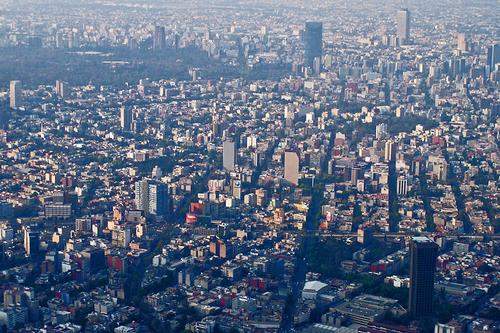 Mexico CityPhoto: Edmund Garman CC 2.0 Generic no changes made
Mexico CityPhoto: Edmund Garman CC 2.0 Generic no changes made
Location
Mexico City Coordinates are: 19 ° 26 'N 99 ° 8' W.
Mexico City is located in the Valley of Mexico, also known as the Basin of Mexico. This valley is located in the volcanic belt, on the high plateau of South Central Mexico. The total area covers 1,513 square km. The valley is located at an altitude of between 2,200 m and 3,930 m above sea level. The plateau is surrounded by mountains and volcanoes that reach heights of more than 5,000 meters.
Weather
Mexico City has a subtropical highland climate due to its location in the tropical belt and due to its elevation. The lower regions of the valley receive less rainfall than the upper regions in the south. Mexico City's low-lying areas are usually drier and warmer than the higher-lying areas. The average temperature varies from 12° to 16°C, depending on the altitude. The lowest temperature, usually recorded in January and February, can be between -2° and -5° C and is usually accompanied by snow. The maximum temperature in late spring and summer can reach 32°C. Extremes range from -4.4°C to 33.9°C. The rainfall is concentrated in the summer months. Snow is very rare in the central valley of Mexico. The average amount of rainfall in the area per year is about 820 mm. There are two different main seasons. The rainy season lasts from June to October when winds bring tropical moisture from the sea and the dry season from November to May. The dry season has a cold period with polar air coming from the north and a warm period with a dominant tropical wind.
History
 Mexico City fall of TenochtitlanPhoto: Public Domain
Mexico City fall of TenochtitlanPhoto: Public Domain
Mexico City was founded in 1325 by the Mexican indigenous people, the Aztecs, and the city was then called Tenochtitlan. After landing in Veracruz, the Spaniards, led by Hernán Cortes, were informed about the famous city. Cortes and his party first saw Tenochtitlan on November 8, 1519, and were baffled by its beauty and size. Their troops landed in the south and took the city street by street, house by house. The Spanish almost completely destroyed Tenochtitlan. They renamed the city Ciudad de Mexico.
The city grew in the direction of the lake. In the 16th century, the Spanish built a large number of Catholic churches, many of them still standing in the historic center today. Mexico City grew well as a result of trade. On September 27, 1821, Mexico's independence from Spain was shaped in the Declaration of Independence from the Mexican Empire, after a decade of war. The Mexican Federation was established with a new government that enacted a constitution, based on a draft of the US Constitution.
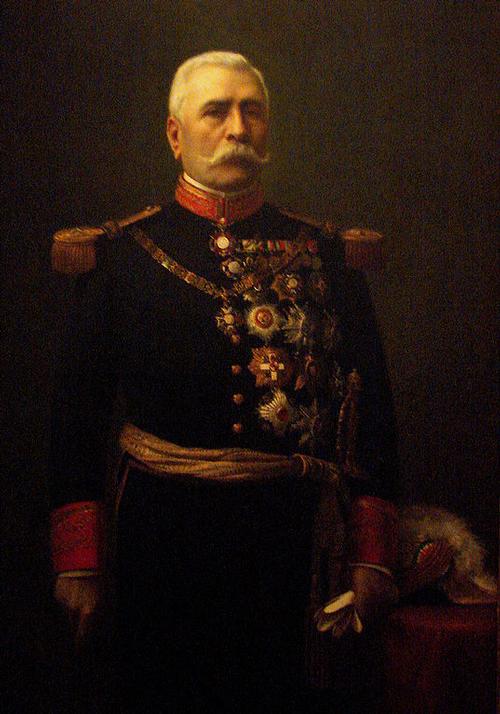 Mexico City Portrait of Poririo DiazPgoto: El Ágora CC 3.0 Unported no changes made
Mexico City Portrait of Poririo DiazPgoto: El Ágora CC 3.0 Unported no changes made
Mexico City underwent a total transformation under Porfirio Diaz's 30-year rule. His goal was to make a city comparable to the major European cities, with Spanish elements in its architecture. Paris was used as a model. This particular blend of Mexican-French style architecture became colloquially known as Porfirio architecture. The city was extensively modernized. Many Spanish colonial-style buildings were destroyed and replaced by new, much larger buildings, and many rural areas on the outskirts of the city were transformed into urban or industrial districts with a modern infrastructure. Mexico City's major landmarks and monuments were built during this period and in this particular style. Rapid modern development eventually led to the Mexican Revolution.
The phenomenal growth of the city in the 20th century had strong, not always good, consequences for the environment. By 1900, Mexico City's population had grown to 500,000. In the early 20th century the city grew rapidly towards the west. Between 1960 and 1980, the city's population had grown to 8,831,079 residents. Services couldn't keep up with such a sudden growth. This caused serious air and water pollution problems in Mexico City.
Sights
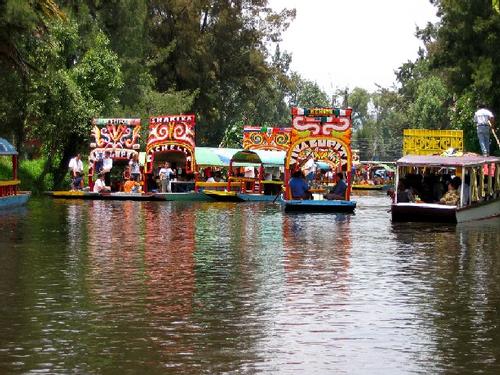 Mexico City XochimilcoPhoto: Clinker CC 1.0 Generic no changes made
Mexico City XochimilcoPhoto: Clinker CC 1.0 Generic no changes made
The historic center of Mexico City and the "floating gardens" of Xochimilco in the southern part of the city have been declared World Heritage Sites by UNESCO. Famous sights in the historic center are the Plaza de la Constitución, the main central square. The Cathedral and the National Palace, also the ancient Aztec temple ruins of Templo Mayor are a short distance away.
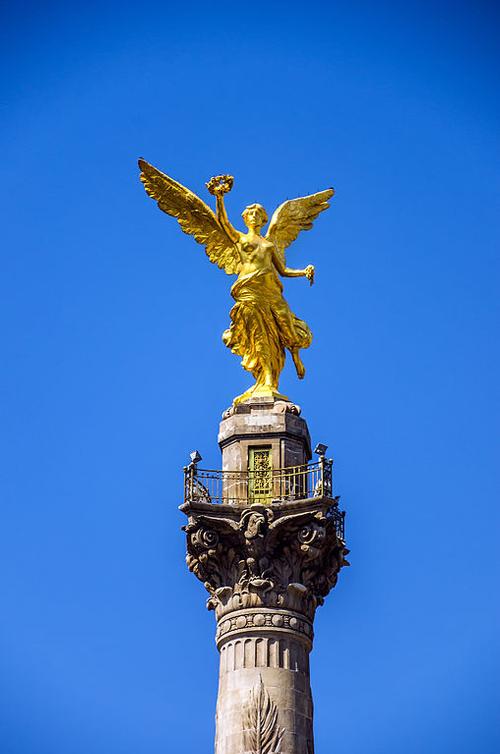 Mexico City Golden AngelPhoto: Lidia Lopez CC 2.0 Generic no changes made
Mexico City Golden AngelPhoto: Lidia Lopez CC 2.0 Generic no changes made
The golden Angel of Independence placed on the wide, elegant street of Paseo de la Reforma is Mexico City's most famous icon. Today this avenue is an important financial district, in which the Mexican stock exchange has established a headquarters. Another important avenue is Avenida de los Insurgentes, which stretches for 28.8 km, making it one of the longest streets in the world.
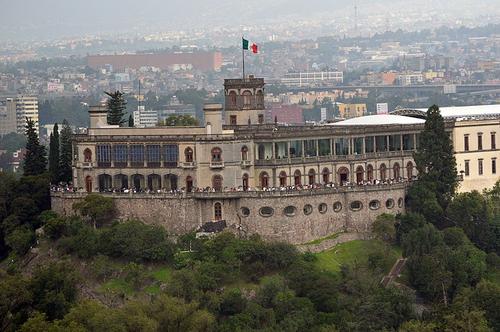 Castle of Chapultepec in Mexico CityPhoto: Arturo Chavez CC 3.0 Unported no change made
Castle of Chapultepec in Mexico CityPhoto: Arturo Chavez CC 3.0 Unported no change made
The Chapultepec park houses the castle of Chapultepec with a beautiful view over the park and the many museums, monuments and the national zoo and the National Museum. The Square of the Three Cultures in the Tlatelolco district and the shrine and basilicas of Our Lady of Guadalupe are also major attractions.
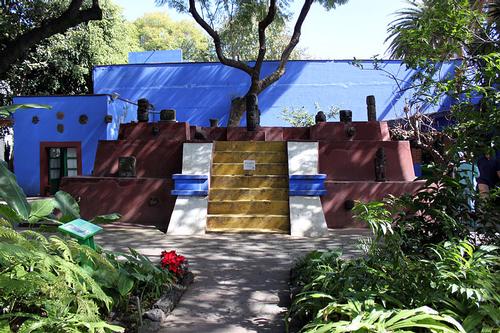 Frida Kahlo Museum in Mexico CityPhoto:Anagoria CC 3.0 Unported no changes made
Frida Kahlo Museum in Mexico CityPhoto:Anagoria CC 3.0 Unported no changes made
Mexico City has about 160 museums, more than 100 art galleries and about 30 concert halls. There is cultural activity all year round. It is the city with the largest number of museums in the world. There are murals by Diego Rivera in a number of the city's settings. Diego Rivera and his wife Frida Kahlo lived in the southern suburb of Coyoacán, where some of their homes, studios, and art collections are open to the public. The house where Leon Trotsky lived and where he was murdered in 1940 is also in Coyoacán.
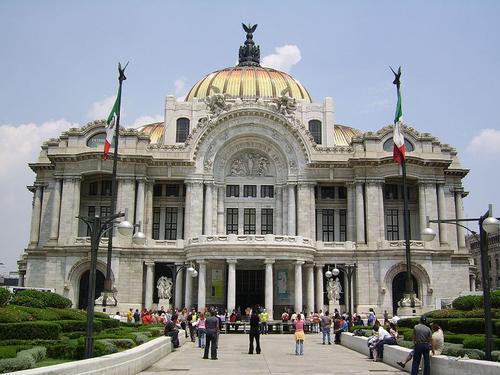 Palacio de Bellas Artes in Mexico CityPhoto: Alex Covarrubias CC 2.5 Unported no changes made
Palacio de Bellas Artes in Mexico CityPhoto: Alex Covarrubias CC 2.5 Unported no changes made
The beautiful Palacio de Bellas Artes is an imposing building located on the eastern side of the Alameda in the center of Mexico City and is known for its large white marble Art Deco facade. The museum was built in the early 20th century and finally completed nearly 30 years later, after significant land subsidence problems. This art center features a number of huge murals by famous artists. The museum also owns excellent paintings that can be seen in the various exhibition halls.
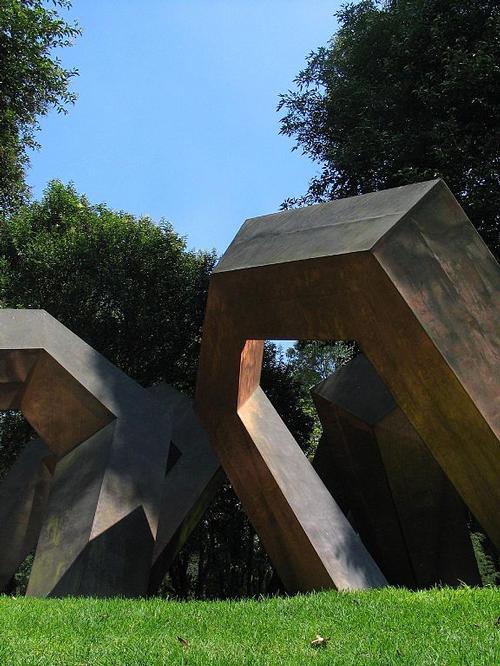 Sculpture garden Museo de Arte Moderno in Mexico CityPhoto: Alejandro MEJIA CC 3.0 Unported no changes made
Sculpture garden Museo de Arte Moderno in Mexico CityPhoto: Alejandro MEJIA CC 3.0 Unported no changes made
Fans of contemporary art should definitely visit the Museo de Arte Moderno, which can be found in the Polanco neighborhood of Mexico City. Paintings and sculptures by some of the country's leading 20th-century artists, such as Frida Kahlo and Francisco Toledo, have been showcased here. Other highlights include a sculpture garden, which can be seen from the museum's coffee shop.
Tips
There are a number of famous restaurants serving fine Mexican food in restored haciendas, such as the San Angel Inn, the Hacienda de Tlalpan and the Hacienda de los Morales.
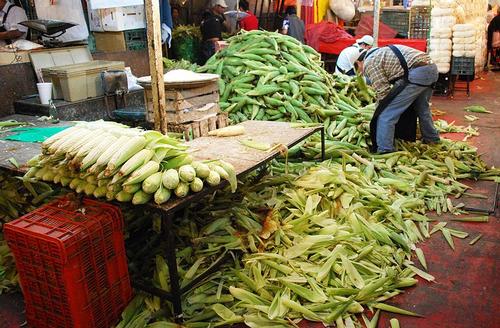 Mercado de la Merced in Mexico CityPhoto: Thelmadatter CCl 3.0 no changes made
Mercado de la Merced in Mexico CityPhoto: Thelmadatter CCl 3.0 no changes made
The Mercado de la Merced marketplace in Mexico City is very busy but you will be rewarded with flavors from all over the country. Traditional food such as fresh white cheese and a variety of hot peppers. Almost all merchants/venodrs will let you taste generously their food. In addition to explosive flavors, there are light wool blankets of every imaginable color dangling from the stands. The Mercado is a celebration of colors and flavors.
Useful links Mexico City
BBC Country ProfilesWorld Fact Book Explore all Countries
How to call
Last updated November 2025
Copyright: Team - The World of Info